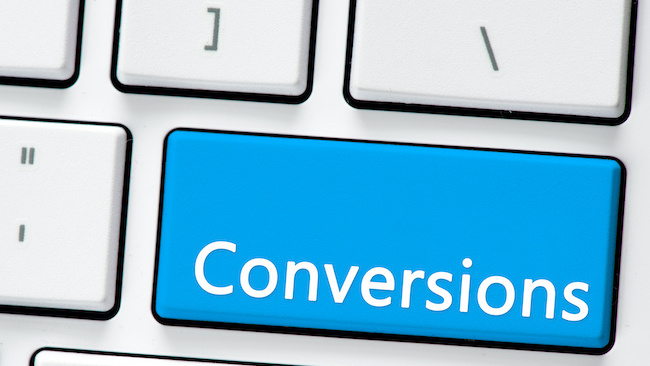Creating Quality Content with a Clear, Non-Aggressive Call to Action
SEO and social media are effective ways to attract potential customers to your website, but once those visitors arrive, what do you want them to do?...

If you're a digital marketer, you've probably been there: excited about the new content you just released, even more excited when you see it's driving traffic, and absolutely befuddled that it isn't driving leads. Why isn't anybody clicking the CTA or filling out the form?
It’s such a common problem that HubSpot has its own Conversion Guru. Okay, I made that up — his name is Evan Dean (@InboundEvan) and his real title is Principal Channel Consultant, but he’s a true expert on all things involving conversion. Evan works with a variety of different clients across tons of different industries and he sees a lot of common mistakes that hurt conversion rates for businesses. Together, we compiled a list of great ways that you can overcome some of the most common conversion mistakes.
When creating a form, an all too common mistake is using mismatched or invasive form field questions. “The classic example would be asking for a phone number in exchange for a white paper,” says Evan. Phone numbers are really personal — and valuable — to most people, so you risk turning them off by asking for too much. The questions on your form field should align with the value of the offer you are presenting. The further down in the buying process you go, the more specific and detailed your questions can be.
“When reviewing or updating a marketing program, always have a consistent and reasonable system of forms, typically a stair-step method, so that you know you have a go-to short and sweet form that’s going to encourage conversion for your top of the funnel offers,” Evan explains.
It comes down to balance. “If the sales team really doesn’t need certain information and if we don’t need it on the front end, I want to limit my form fields and lower the barrier of entry,” he recommends.
When I want to get more information from leads, but don’t want to ask too many questions, I will put questions in the queue. That way, if the lead has previously filled out a form, I can get new information from that person with every new form they fill out.
I should also mention that not everything needs to be behind a form field. All too often, a new marketer will get a little form-happy and put offers behind a form that should absolutely not be gated — like your company brochure. There is certain information that you simply want prospects to have outright.
Also, when delighting your customers and prospects, giving away “free” resources like an eBook (without using a form) might not be a bad idea. Once they see you as trustworthy, they will be more likely to give you the more sales-specific information.
“An absolutely huge mistake is to forget about your old stuff as far as pages are concerned,” says Evan.
Remember, when marketers create a new content offer, whether that be an eBook or a white paper, it is our best content offer available. It is current and fresh and it’s probably going to have the highest conversion rate on your website. Conversely, when it comes to blogs and pages, the older, tested content usually has more traffic, because it has had a chance to be linked to and shared, have long on-page times, low bounce rates, and be referenced by other people.
“When we go back and look through our blog posts, if you have been creating content for a long time, you are likely going to find that a blog post from 2015 drives the bulk of your traffic, playing into the 80/20 rule,” says Evan. “So it’s 20% of your content that’s driving 80% of your traffic and oftentimes that 20% is going to be older content.”
So when you create a new content offer, don’t forget to go back to those highly viewed blog pages and update them with your new content offers. Look for places that you can naturally link to them in the text as well as places to add them as CTAs.
Does the message highlighted in the CTA match the landing page you have directed the lead to? “The first thing we learn to critique as inbound marketers is consistency in expectation setting for your offers,” says Evan. “If the CTA says you are going to learn more about the product and then you get to a landing page that drives you to schedule a call or buy now, we have been very inconsistent with our message and it is really going to hurt our conversion rates.”
Evan says that he frequently sees CTA’s for “Schedule a Consultation” and then once they get to a landing page, it’s trying to sell the viewer on how the company is better, faster, and stronger than the competition when they should be talking about the value of a consultation. That’s not going to encourage someone to give you their information.
You want to be sure that what your viewers click on is what they get. This ties in a bit with brand trust. They need to know that what they say want is what you are providing them and that you are not fishing for a sale. Don’t be a sleazy salesperson...be an educating marketer!
Evan says he sees plenty of mistakes being made after the conversion as well. Building brand trust is a critical part of converting your leads into customers. But all too often, we falter with brand trust when we are first introduced to a new lead. These days in marketing, you don’t want to be pushing people to get on the phone with a salesperson or “contact us” before they are ready or you lose the potential sale and that person's allegiance.
“When I talk about burning goodwill, it comes down to your workflows,” says Evan. “If someone downloads an eBook from you, and then you email them every day for a week, or I have even seen where it is every day for a month, you are really hurting that goodwill. It’s also hurting your email deliverability scores.”
If a lead is converting in a top of the funnel offer, you want to guide them through converting at middle and bottom of the funnel offers. Don’t bother them too much in the beginning, focus on giving them the information they were seeking and provide an easy path for their next steps.
Take a sweep through your existing forms, landing pages and offers with these four mistakes in mind. Optimize your most viewed forms, landing pages and offers until you start to see increases in conversion rate and then use what you’ve learned to optimize other forms and pages on your site.
Benchmarks are really tricky because there are so many variables and factors, but here’s a general guideline that you can follow for updating your pages:
Less than 10% conversion rate: Unless this is a bottom of the funnel offer, like a contact form or demo request, you’ll probably need to make some more drastic changes. There is probably some confusion around the offer itself or why your audience would benefit from it. Consider changing the copy or adding a video to your landing page to help create more clarity. You may even need to reevaluate the offer itself.
Between 10-20% conversion rate: Look for smaller ways to improve the conversion rate. A/B test a different title or description copy. Try changing the number of form fields or adding an image that allows users to see what they are getting.
Over 30% conversion rate: This is a really solid conversion rate, so don’t go changing things too drastically. Make sure you know exactly what minute changes you are making and test them against your previous version. Try things like adding social proof from happy users to continue to increase your conversion rate.
Every business, industry and offer is going to be a little different so what worked for one company might not work for another. That’s why when it comes to optimizing your conversion rates, data is your new best friend.

SEO and social media are effective ways to attract potential customers to your website, but once those visitors arrive, what do you want them to do?...

People will find your website in many ways. They may find it through a blog that was found in a Google search. They may click on a pay-per-click...

Ultimately, we all need to drive more business — sales teams are always asking for more opportunities, and marketing needs to deliver. So, as a...